If you live with ADHD, chances are you’ve searched for advice like “how to practice mindfulness,” “mindfulness for ADHD,” “examples of mindfulness,” or even “how to focus without meditation.” What you typically find are suggestions for long, calm meditation practices. While these can be helpful for some, they often set people with ADHD up for frustration. When your mind is racing, being told to “calm down on command” feels impossible. Instead of feeling mindful, you end up feeling like you failed—and nothing gets done.
This is where Acceptance and Commitment Therapy (ACT) offers something different. In ACT, mindfulness is not about stillness or silence. It is a stack of flexible, in-the-moment skills designed to help you act even while life feels noisy. Three of the most relevant skills are:
- Defusion: Learning to step back from thoughts so they are experienced as words, not commands. Research shows that brief defusion exercises can make distressing thoughts feel less believable and less emotionally overwhelming—even after a single exercise (Masuda et al., 2004; Masuda et al., 2009).
- Acceptance: Allowing sensations (jitters, heaviness, buzzing energy) to be present without needing to suppress them. Acceptance has been found to be more efficient and sustainable than suppression in regulating emotions (Frontiers in Psychology, 2020).
- Labeling: Putting feelings into words—“I feel pressure in my chest,” or “This is the perfectionism voice.” Affect labeling recruits prefrontal control and dampens amygdala activity, reducing the sense of alarm and making action easier (Lieberman et al., 2007).
When researchers look across studies, mindfulness-based programs for ADHD show small-to-moderate benefits. That means they are helpful—but not a cure-all (Mitchell et al., 2021, Journal of Affective Disorders; MDPI Review, 2022). What makes the difference is how mindfulness is applied.
ACT emphasizes learning to begin under noise, not after noise disappears. This matters because ADHD brains often wait for “the right moment” or a sense of calm that never comes. By practicing in-the-moment skills, you develop psychological flexibility—the ability to act effectively even when your mind is noisy. Higher psychological flexibility is consistently linked with better outcomes across conditions (Hayes et al., 2024, Clinical Psychology Review; BMC Psychiatry Meta-analysis, 2025).
The 90-Second Core: Notice → Name → Open → Start
This is a simple, repeatable routine you can use in under two minutes—whether you are stuck in morning inertia, lost in doomscrolling, frozen by perfectionism, or dreading bedtime tasks.
- Notice (5–10 seconds).
Observe what is present: a thought (“This will take forever”), a sensation (chest buzz, jaw tension), and the smallest next step in front of you (cursor, shoes, sponge). - Name (10–15 seconds).
Label the thought neutrally: “Perfectionism Script”, “What-If Trailer”, or “Low-Fuel Narrator.” Research on defusion shows that naming thoughts in this way reduces their believability and sting (Masuda et al., 2004; 2009). - Open (10–15 seconds).
Make space for sensations instead of fighting them: “Buzz can ride shotgun for a minute.” Acceptance avoids the costs and rebound effects of suppression (Frontiers, 2020). - Start (≤45 seconds).
Take one small action in line with your values (learning, care, reliability, play). Examples: type 10 words, wash two dishes, send one honest message, or tie one shoe and step outside. Labeling feelings helps downshift the brain’s alarm response, making this first step easier (Lieberman et al., 2007).
ADHD-Friendly Add-Ons
To make the core routine even more effective, you can experiment with small add-ons:
- Sticker-Label Defusion: Treat repetitive thoughts like a radio channel and give them a “sticker label” (e.g., “Brain Radio — Not-Enough FM”). This creates distance and allows you to act anyway (Masuda et al., 2004).
- If–Then Start Lines: Pre-decide your first move (“If I open Notes, then I type a 10-word summary”). Implementation intentions are well-supported strategies for self-regulation, including in ADHD (Frontiers in Human Neuroscience, 2015; APSARD).
- Timer Ladder (3-2-1): Use short timers to start, continue, and stop tasks with less resistance.
- Task in Threes: Break overwhelm into a “begin → bridge → begin again” cycle.
- Body Doubling, Mindfully: Work alongside a friend or co-working stream for 10 minutes, keeping the Notice → Name → Open → Start steps visible.
Why This Works for ADHD
- Defusion changes your relationship to thoughts, instead of arguing with them (Masuda et al., 2004; 2009).
- Acceptance conserves energy, whereas fighting sensations wastes mental resources (Frontiers, 2020).
- Labeling calms the brain’s alarm system, making initiation easier (Lieberman et al., 2007).
- Mindfulness works, but modestly, so it’s best viewed as a set of micro-skills, not a miracle cure (Mitchell et al., 2021).
ACT’s mechanism (psychological flexibility) has consistent evidence across conditions (Hayes et al., 2024; BMC Psychiatry, 2025).


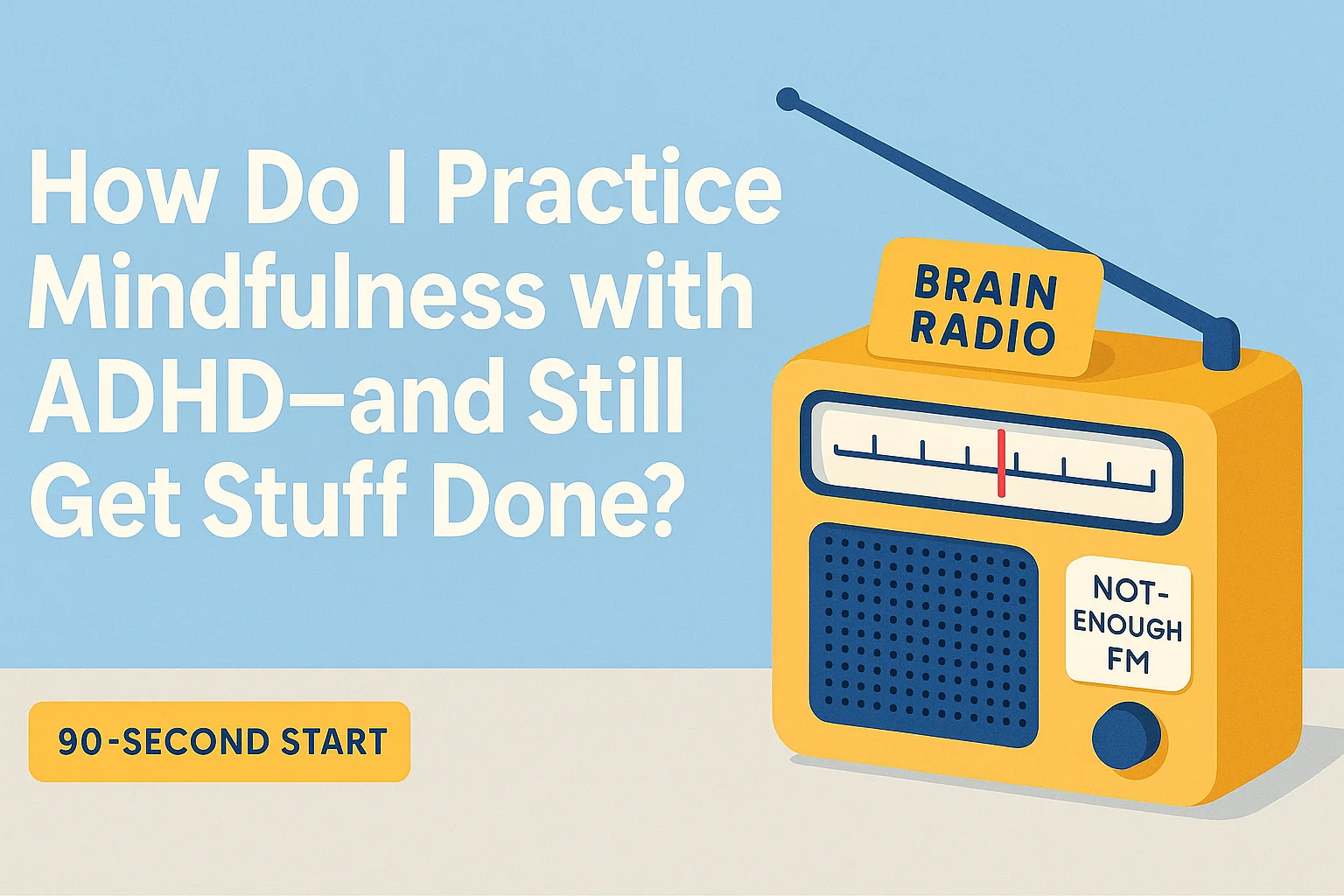
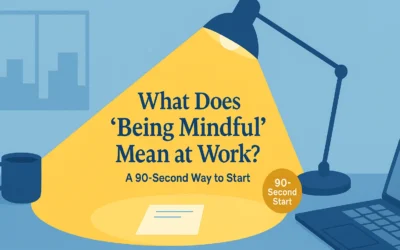
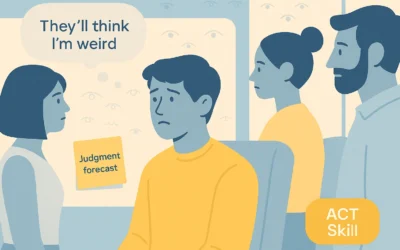
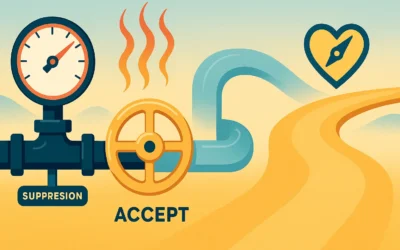
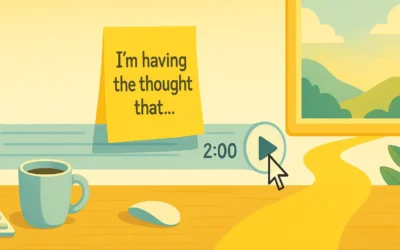
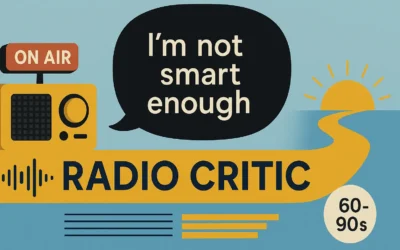
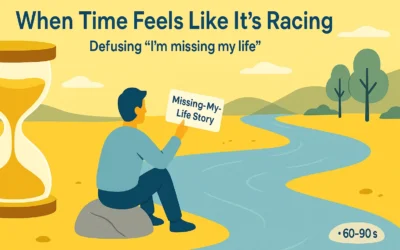
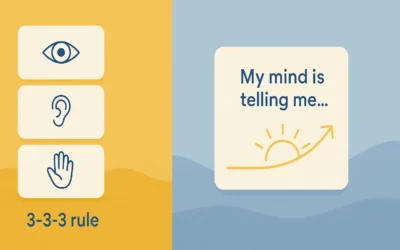
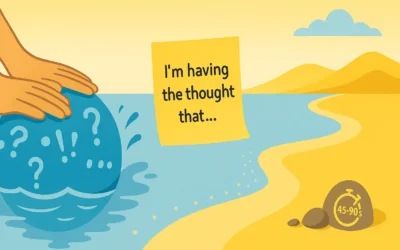
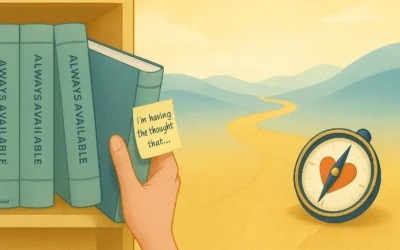
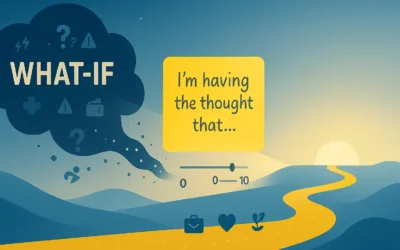
0 Comments